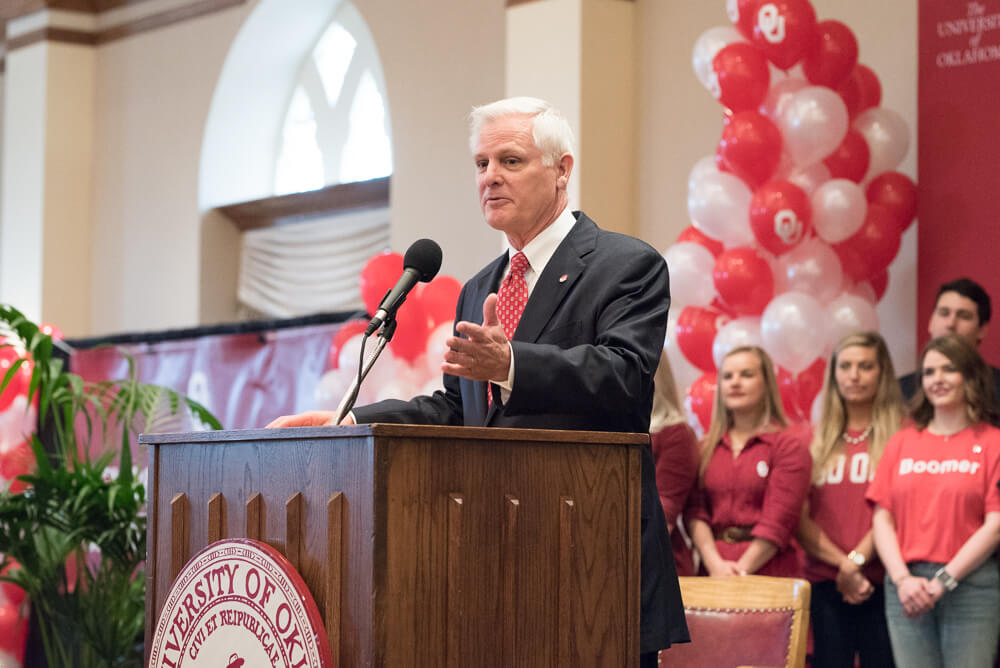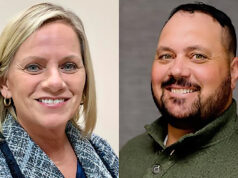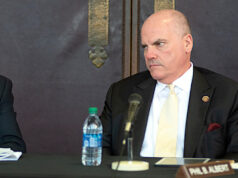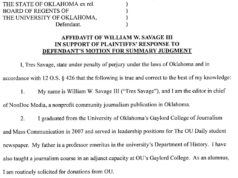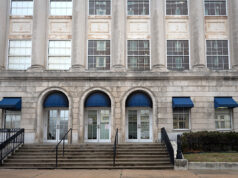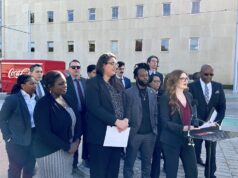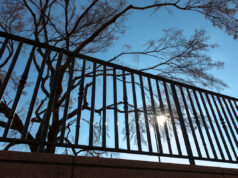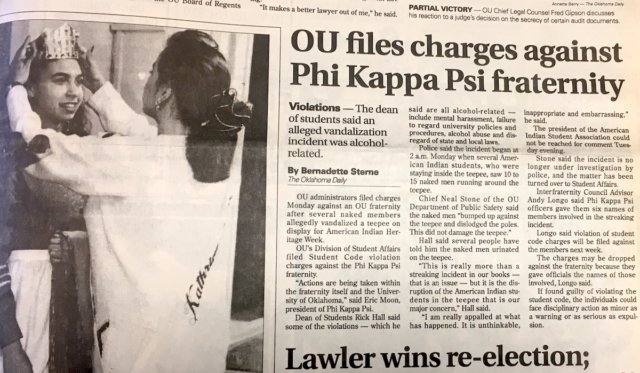

The spring air still felt a little like winter as five Indigenous students of the University of Oklahoma slept inside a tepee during the early hours of March 14, 1994.
The students had erected the tepee near the Bizzell Memorial Library as part of American Indian Heritage Week. Around 2 a.m., naked and intoxicated Phi Kappa Psi fraternity members came upon the tepee, circling it as they slapped its sides.
Witnesses alleged that at least one member of the group urinated on the dwelling. Another tried to enter, causing a pole to fall down.
What began as a drunken streak across campus ended with five terrified Native American students and a semester’s worth of headlines in The Oklahoma Daily.
The incident occurred 25 years ago today, and surely few current OU students know it ever happened, even with recently heightened discussions about the campus climate for minority students. But times have changed, right? Yes and no. The university is still dealing with race-related problems, but now everyone is watching.
The difference 25 years would have made
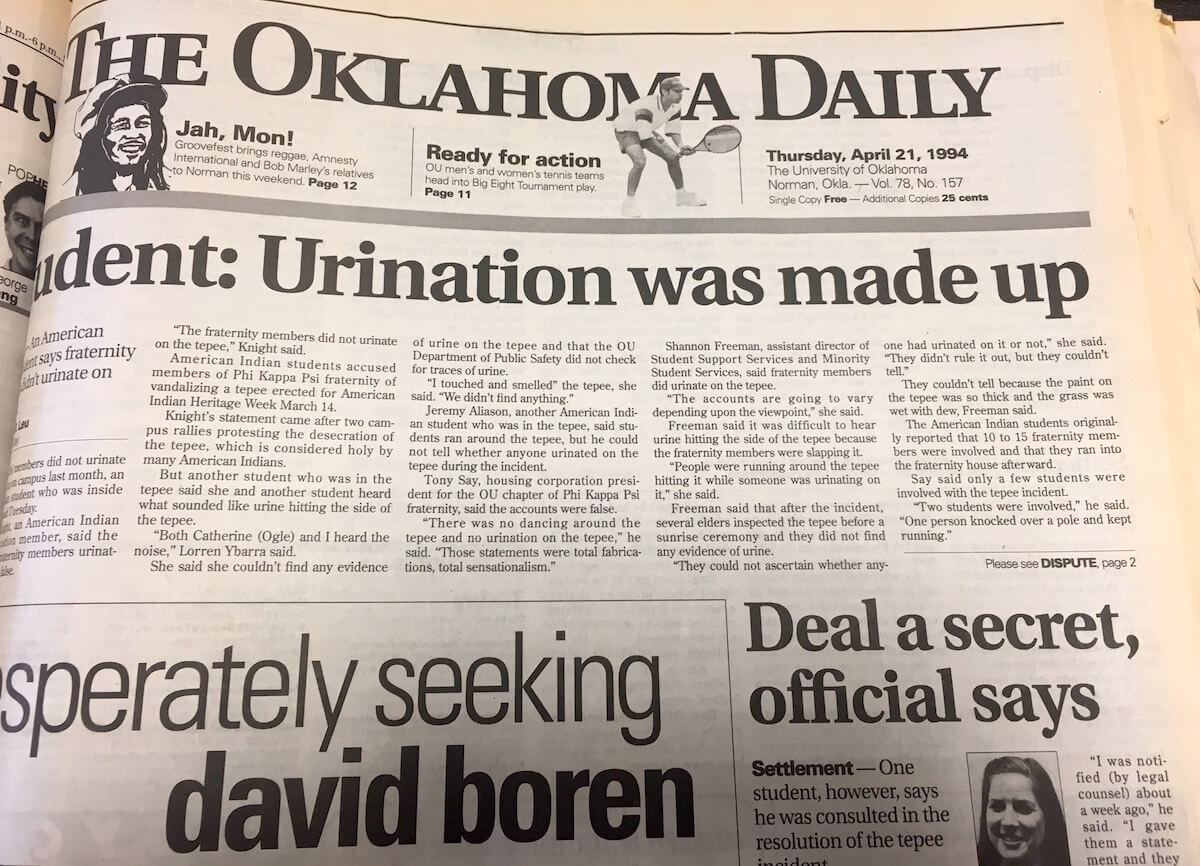
In January of this year, a video surfaced on social media that showed an OU student wearing blackface and using a racial slur. Within hours, the moment had been shared thousands of times. Days later, a man was seen wearing blackface on campus. Weeks later, a former OU student’s racial slurs were surfaced on an Instagram video.
These recent controversies took my mind back to the OU tepee vandalism incident of 1994. There were protests and meetings, strongly worded letters to the editor of the school paper and at least one threat of a lawsuit. And then it just kind of slipped into the ether. I found myself wondering how naked, drunken fraternity members toppling a Native dwelling would play out in 2019; how the reaction might have been different.
For starters, every second would have been documented, possibly in real time. Most of us carry what amounts to a video production facility in our pockets. We also have the power to broadcast our innermost thoughts — along with videos of our cats coughing up hairballs — to the world instantly.
In 1994, news of the incident didn’t make The Oklahoman until 48 hours after it happened, and even then it wasn’t on the front page. OU’s student paper drove the coverage, along with word of mouth and a few 30-second TV news stories.
Today, the perpetrators would have been identified in a matter of hours. A day at the most. That’s what happened with this year’s blackface video. There would have been little debate about whether the students urinated on the tepee, as it likely would have been filmed.
In 1994, the six fraternity students involved were never publicly identified, though OU’s administration knew who they were. OU officials cited the Buckley Amendment (also called FERPA) as reason to keep names hidden. Not even their punishments were revealed.
RELATED
The right position: OU must acknowledge racism by J.D. Baker
“Appropriate sanctions have been levied,” OU’s chief legal counsel, Fred Gipson, said in a statement released at the time.
Watching the campus rally held after this year’s blackface video, it’s hard to imagine a limp statement about the Buckley Amendment placating anyone in 2019. Video drove the outrage in the blackface incident. There’s no way second-hand accounts of a student slathered in paint uttering racial slurs would have had the same impact as images and sound.
The same can be said for the Sigma Alpha Epsilon fraternity’s racist sing-a-long in 2015 that made national news and stirred racial tensions on campus. Former OU President David Boren booted the fraternity off campus. It’s doubtful Boren would have been moved to such dramatic action by an anonymous email or even an audio recording.
Social media play roles in other incidents
One day after the January rally on campus, an OU student recorded a man walking around Campus Corner with blackface and shared it on social media. This month, an anonymous individual peeled back the lid on OU’s College Republicans GroupMe conversations. Mocking those offended by the blackface incident, some young conservatives wondered (digitally) aloud if racial slurs were really such a bad thing. The students making egregious statements were outed as obtuse bigots and condemned widely.
Months later the conversation about race is still going on at OU. Gallogly met with the Oklahoma Black Legislative Caucus to discuss racial issues on campus. The university will hold a monthly “conversation” event that will allow students to express themselves.
Almost none of that happened in 1994. That’s because the OU tepee vandalism incident happened under the cover of night with only a handful of witnesses. Today, the entire world is watching.








